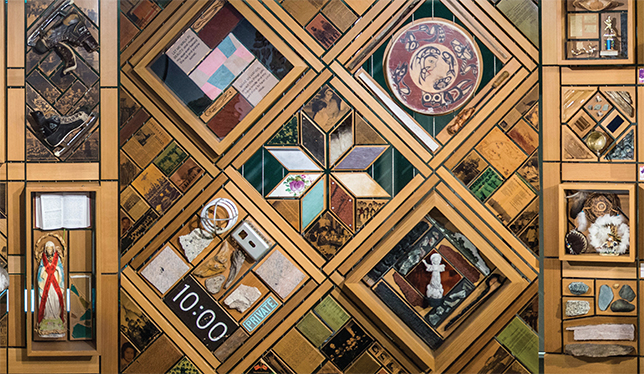No matter who Shirley Hardman talks to after they’ve seen the Witness Blanket at the University of the Fraser Valley, “they are moved by the blanket,” she says. “It’s a tremendous piece that Carey Newman has built.”
Ms. Hardman, senior adviser on Indigenous affairs at UFV, is referring to the large-scale art installation by Kwagiulth master carver Carey Newman (Ha-yalth-kingeme), comprising more than 800 items reclaimed from Indian Residential Schools, churches, government buildings, universities and cultural institutions.
Inspired by a woven blanket and held together by wood and screws, the work pays tribute to children dishonoured by residential schools and reminds us of the system created by church and state to “take the Indian out of the child,” according to the project’s website.

Since 2015, the Witness Blanket has been a touring exhibition stewarded by the Victoria Native Friendship Centre. It has found a home in such places as the University of Regina, Cape Breton University Art Gallery, Unama’ki College, Vancouver Island University, and now UFV (from September 13 to November 8). Its next stop is the First Nations University of Canada, from January to March 2018.
Bringing this national monument to UFV’s campus has been several years in the making, Ms. Hardman explained. And, as vice-provost Peter Geller added, the university did not want to merely host a passive art exhibit. “These aren’t just artifacts but they have life and are animated,” Dr. Geller said. “We wanted to host it in a way that it’s not just left alone.”
The Witness Blanket has been an anchor for dialogue such that, this fall, UFV introduced a public lecture series and a three-credit, interdisciplinary seminar around the artwork. Open to upper-year students, faculty and staff (there are about 30 people enrolled), the course aims to provide an understanding of the effects of Indian Residential Schools, of how students can work as allies for reconciliation, and of Stó:lō protocols and ways of knowing.